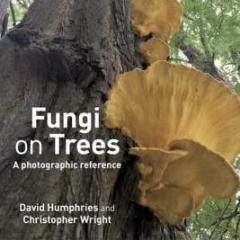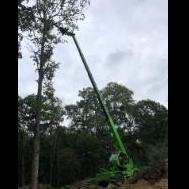-
Posts
23,485 -
Joined
-
Last visited
-
Days Won
3
Content Type
Profiles
Forums
Classifieds
Tip Site Directory
Blogs
Articles
News
Arborist Reviews
Arbtalk Knot Guide
Gallery
Store
Freelancers directory
Everything posted by David Humphries
-
-

I'm an iggly, I'm an iggly, what iggly am I ?
David Humphries replied to David Humphries's topic in Ecology
Yeah, should be there Paul. -

I'm an iggly, I'm an iggly, what iggly am I ?
David Humphries replied to David Humphries's topic in Ecology
Mycelium which has been cultivated by an Ambrosia beetle, throughout this gallery within a relatively healthy red oak,.........well it was until it fell over last week. -
Any birch polypores (as well as the Fomes) on these or other birches in the area Nick? Good to see you posting, trust all is well t'up north?
-

Cedar of Lebanon trees at hardwick heath, Bury st Edmunds
David Humphries replied to Steve Bullman's topic in General chat
Another fine Cedar to take a butchers at if in the area of Bury st Edmunds, is the one growing in the remnant of a church ruin on Barton Road. -

Cedar of Lebanon trees at hardwick heath, Bury st Edmunds
David Humphries replied to Steve Bullman's topic in General chat
Cool ! -

Cedar of Lebanon trees at hardwick heath, Bury st Edmunds
David Humphries replied to Steve Bullman's topic in General chat
You running the Picus over them? -

Cedar of Lebanon trees at hardwick heath, Bury st Edmunds
David Humphries replied to Steve Bullman's topic in General chat
How inconsiderate............hope Mrs Eggs is ok. -

Cedar of Lebanon trees at hardwick heath, Bury st Edmunds
David Humphries replied to Steve Bullman's topic in General chat
Always been a handy spot to take the lads for a kick about and leg stretch whilst visiting folk in the adjacent Hospital. Some very fine specimens in there. Cedars for goal posts ! -

Tis the season to see Fungi, fa la la la la....
David Humphries replied to David Humphries's topic in Fungi Pictures
-

Tis the season to see Fungi, fa la la la la....
David Humphries replied to David Humphries's topic in Fungi Pictures
-
Sounding them with a nylon hammer to hear the tone of the resonance to assess wood density is a simple option.
-
I suspect these are Ganoderma species. hard to determine which species, but the brown flesh is a good giveaway. I've seen plenty of Ganoderma fruitbodies growing from dysfunctional roots away from the base of trees. Have a dig and prod around the location to see if they are directly associated with the tree roots or an old stump under the surface.
-
That’s a really interesting job, what was the general outcome in terms of state of decay? Assuming they were elm or oak?
-
Too much of that nasty green stuff around it, can barely appreciate its dead aura
-

Assessing root compaction and dysfunction
David Humphries replied to David Humphries's topic in Tree health care
At work this weekend looking at trees and stuff, but had an opportunity to join a group for an hour or so looking at the local soils for the presence of & identifying earth worms. There are 3 main types of earth worm in the UK, the compost worm, (found in the upper 10cm or so of the humus rich layer) the earthworker (which is busy tilling the soil by burrowing down a couple of feet or more) & the root dwelling worms which are seldom seen near or above surface as they're usually to be found down amongst the decaying tree roots. The Earthworker worms (these are the ones that Darwin studied extensively) are the ones that create the worm tents that can often be seen on the surface where they pull down and digest the vegetative part of leaves, leaving behind the indigestible stalks. This is potentially a good way of assess certain aspects of soil health across the site, so although the group were mostly looking at grass areas where there is less compaction we're planning to take it in to the woodland path areas to assess the soil living conditions.- 16 replies
-
- 3
-

-
- compaction
- penetrometer
-
(and 1 more)
Tagged with:
-
Oddly enough there appears to have been a reduction in Massaria effected branches across the capital so far this year, possibly to do with this winters cold/wet climate. I haven't noticed an increase in 'London Plane' felling across the boroughs but cyclical reduction/pollarding is still being carried out to reduce subsidence claims. Let's hope we don't get Ceratocystis (Plane Wilt) from the continent, because if (and when) we do we'll see a City treescape transformed over night like in the towns and landscape across France, Italy and Switzerland where they have it. Not entirely sure TfL/London square issue your referring to Gary? Finsbury Circus & the Crossrail?
-
German company (Baubotanic) creating building structures formed by grafting trunks https://youtu.be/IQdcfiLfgUY Would be interesting to know what Klaus Mattheck or Duncan Slater would think of it. Be a conundrum if a section got Massaria or Plane wilt or another structural decay.
- 1 reply
-
- 2
-

-
Likely to be Ganoderma australe but to get a better handle on fungal Id's try and take a wedge out of the fruit body to show us the texture, colour of the flesh and tube layer. helps massively with narrowing down an ident
-
You're welcome Tim. Confirmation of what it is or what it is not is the foundation of sound prognosis/prescription. Any root damage or evidence of lightning strike? Have you sounded the stem around the infected area, any decay or change in resonance evident? Consider sending of a bark sample for lab analysis. Consider chasing out the infected bark tissue and sterilising the infection with heat. But first try and attain confirmation of what it is. .
-
Attended a Ted Green seminar on tree archeology at Barchams today and one of his slides showed sheep taking advantage of the shade of a giant wind turbine just like they do with trees. It would be kinda cool to see a time lapse of the sheep moving with the shade through the day. These are very similar shots to the one Ted showed that I nabbed off the web.
-
Not neseccarily kretzschmaria. In my experience the stem bleeds are usually associated with late stage decay of Kretz where there would usually be anamorphic or teleomorphic stages of fruit bodies present. Your example could well be a bleeding canker infection like Phytophthora cactorum/citricola.
-
-
Any shots of the actual branch along its length Jules?
-
Were the completed radial cracks predominantly in tension or compression Jules?









































